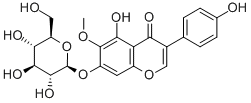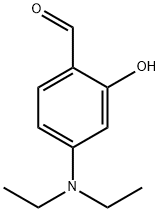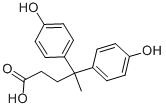Orris oil
- CAS NO.:8002-73-1
- Molecular Weight: 0
- MDL number: MFCD01774678
- Update Date: 2024-12-18 14:08:52
What is Orris oil?
Description
Perennial herbaceous plant that grows wild or can be cultivated.
The various species are native to the Far East, but they are well
acclimated to the Mediterranean regions as well. Their cultivation
in Italy represents a flourishing industry.I. pallida Lam. is the best
variety for extractive purposes, followed by I. germanica and I.
florentina (which is cultivated mainly for ornamental purposes).
Depending on the variety, the plant exhibits blue, deep blue, or
whitish-blue veined flowers. It has an erect stem and radical leaves.
It has large, horizontal, highly branched, and fleshy rhizomes
exhibiting a pleasant and persistent odor. The fragrance of I. pallida
is most persistent.
The peeled rhizomes (roots) are used after two years of aging.
Commercial qualities include straight, twisted, and knotty rhizomes.
Orris has a violet-like odor with a fruity undertone.
Orris concrete: Orris butter, or orris concrete, is obtained by steam
distillation of dried ground rhizomes with yields ranging between
0.2 to 0.3%. Special techniques and prolonged distillation are
required. It contains 13% to 17% ketones (sometimes more) calculated
as irone; 83 to 86% free or partially esterified fatty acids
(e.g., myristic); terpene and sesquiterpene alcohols; aldehydes; and
esters. The physical-chemical constants vary, depending on the
origin of the rhizomes. At room temperature, orris concrete from
1. pallida Lam. is a light yellow-brown solid mass with a violetlike
fragrance; at 40 to 50℃ the product melts to a yellow to
yellow-brown liquid.
Orris absolute: Obtained by alcoholic extraction of the concrete
to separate the fatty acids and their esters. It may contain from 55
to 85% ketones (irone).
Orris resinoid: The resinoid is prepared by extracting the comminuted
rhizomes with yields of 2.4 to 3.3% using benzene, or 1
to 2% using petroleum ether. An absolute can be prepared from
the resinoid; this contains 62 to 78% ketones (irone).
The derivatives are fluid extract, concrete and absolute essence,
resinoid, and the tincture (20% in 50 to 60% ethanol or 30% in
55% ethanol).
Chemical properties
Orris root oil is obtained by steam distillation of the rhizomes of the sweet iris,
Iris pallida Lam. (Iridaceae), cultivated in the Italian province of Tuscany and in
China, or Iris germanica L., cultivated inMorocco. Prior to distillation, the
rhizomes are stored for several years and are then ground.The steam distillate is a light yellow to brown-yellow solid mass with a violet-like odor.The solid liquefies
to a yellow to yellow-brown liquid at 38–50 ℃.
Acid number: 175–235, corresponding to an acid content of 71–95% (calculated
as myristic acid); ester number: 4–35; ketone content (calculated as irone):
9–20%; soluble with ethanol in all proportions at 50 ℃.
Because of its high content of myristic and other fatty acids, the steam distillate
is a waxy mass that resembles a concrete and is sold under this name or as Beurre
d’Iris (Orris butter). In addition, a neutral product, obtained after removal of the
acids with alkali, is marketed under the name orris oil absolute or as orris oil 10-fold.
The main constituents of the oils are cis-γ-irone (usually 30–40%) and cis-α-
irone (usually 20–30%), which are also responsible for the typical odor. I. pallida
oil contains the dextrorotatory enantiomers while I. germanica oil contains the
levorotatory enantiomers. Most of the processed orris products are
derived from I. germanica roots grown in Morocco.
Fresh orris roots do not contain any irones. These compounds are formed by
an oxidative degradation process from higher molecular precursors, the so-called
iridales, only when the dried orris roots are stored for a longer period. To avoid such a time-consuming procedure, microbiological or special fermentation
processes have been developed.
The oil is very expensive and is used in perfumery and in flavor compositions.
Chemical properties
Orris butter, or orris concrete, is obtained by steam distillation of dried ground rhizomes with yields ranging between 0.2 and 0.3%. Special techniques and prolonged distillation are required. The physical–chemical constants vary, depending on the origin of the rhizomes. The concrete has a violet-like fragrance. Orris Absolute: Orris absolute is obtained by alcoholic extraction of the concrete to separate the fatty acids and their esters. It may contain from 55 to 85% ketones (irone). Orris Resinoid: The resinoid is prepared by extracting the comminuted rhizomes with yields of 2.4 to 3.3% using benzene, or 1 to 2% using petroleum ether. An absolute can be prepared from the resinoid; this contains 62 to 78% ketones (irone).
Physical properties
At room temperature, orris concrete from I. pallida Lam. is a light yellow-brown, solid mass; at 40 to 50°C the product melts to a yellow or yellow-brown liquid. It is soluble in most fixed oils, mineral oil and propylene glycol. It is insoluble in glycerin.
Occurrence
Found in the rhizomes of Iris pallida. Lam. (Fam. Iridaceae) (Guenther. 1952; Naves, 1974).
Preparation
By alcoholic extraction of the concrete (Fenarolis Handbook of Flavor Ingredients. 1971).
Definition
Extractives and their physically modified derivatives. Iris pallida, Iridaceae.
Essential oil composition
The oil contains 13 to 17% ketones (sometimes more) calculated as irone 83 to 86% free or partially esterified fatty acids (e.g., myristic), terpene and sesquiterpene alcohols, aldehydes and esters.
Safety Profile
Low toxicity by ingestion. Whenheated to decomposition it emits acrid smoke andirritating vapors.
Properties of Orris oil
| Melting point: | 40-46 °C(lit.) |
| FEMA | 2829 | ORRIS CONCRETE LIQUID OIL (IRIS FLORENTINA L.) |
| Flash point: | >230 °F |
| color | Pale yellow to yellow oil |
| Odor | woody fatty violetfruity sweet floral |
| EPA Substance Registry System | Oils, orris (8002-73-1) |
Safety information for Orris oil
Computed Descriptors for Orris oil
New Products
4-Fluorophenylacetic acid 4-Methylphenylacetic acid N-Boc-D-alaninol N-BOC-D/L-ALANINOL Tert-butyl bis(2-chloroethyl)carbamate 3-Morpholino-1-(4-nitrophenyl)-5,6-dihydropyridin- 2(1H)-one Furan-2,5-Dicarboxylic Acid Tropic acid S-2-CHLORO PROPIONIC ACID ETHYL ISOCYANOACETATE 2-Bromo-1,3-Bis(Dimethylamino)Trimethinium Hexafluorophosphate (6-METHYL-[1,3]DITHIOLO[4,5-b]QUINOXALIN-2-ONE INDAZOLE-3-CARBOXYLIC ACID 4-IODO BENZOIC ACID (2-Hydroxyphenyl)acetonitrile 4-Bromopyrazole 5,6-Dimethoxyindanone 2-(Cyanocyclohexyl)acetic acid 4-methoxy-3,5-dinitropyridine 2-aminopropyl benzoate hydrochloride 1-(4-(aminomethyl)benzyl)urea hydrochloride diethyl 2-(2-((tertbutoxycarbonyl)amino) ethyl)malonate tert-butyl 4- (ureidomethyl)benzylcarbamate Ethyl-2-chloro((4-methoxyphenyl)hydrazono)acetateRelated products of tetrahydrofuran








You may like
-
 2033-24-1 98%View Details
2033-24-1 98%View Details
2033-24-1 -
 42831-50-5 5-METHYLISOXAZOLE-4-CARBOXYLIC ACID 98%View Details
42831-50-5 5-METHYLISOXAZOLE-4-CARBOXYLIC ACID 98%View Details
42831-50-5 -
 1975-50-4 98%View Details
1975-50-4 98%View Details
1975-50-4 -
 2-HYDROXY BENZYL ALCOHOL 98%View Details
2-HYDROXY BENZYL ALCOHOL 98%View Details
90-01-7 -
 2-Chloro-1,3-Bis(Dimethylamino)Trimethinium Hexafluorophosphate 221615-75-4 98%View Details
2-Chloro-1,3-Bis(Dimethylamino)Trimethinium Hexafluorophosphate 221615-75-4 98%View Details
221615-75-4 -
 61397-56-6 CIS BROMO BENZOATE 98%View Details
61397-56-6 CIS BROMO BENZOATE 98%View Details
61397-56-6 -
 14714-50-2 (2-Hydroxyphenyl)acetonitrile 98+View Details
14714-50-2 (2-Hydroxyphenyl)acetonitrile 98+View Details
14714-50-2 -
 118753-70-1 98+View Details
118753-70-1 98+View Details
118753-70-1